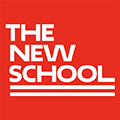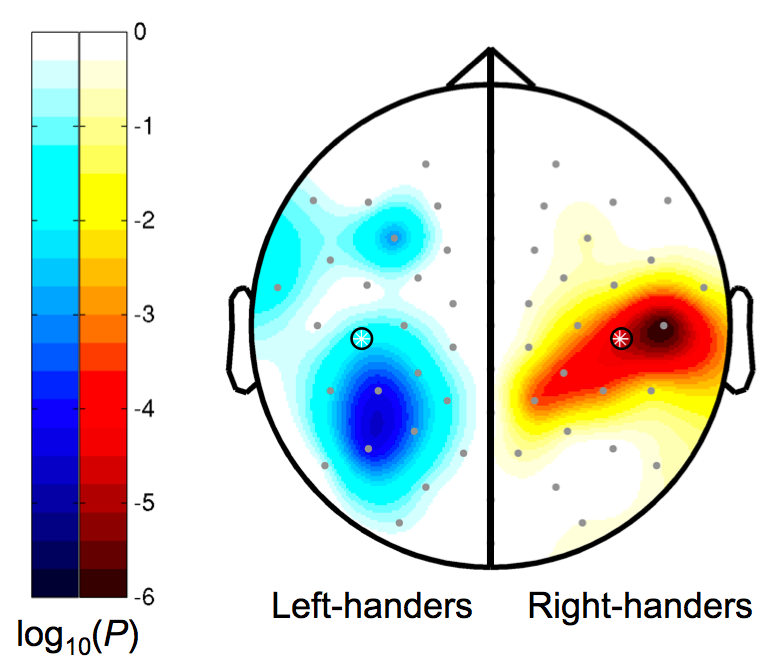NEW SCHOOL STUDY: EMOTION REVERSED IN LEFT-HANDERS' BRAINS
|
|
NEW YORK (May 2, 2012) - The way we use our hands may determine how emotions are organized in our brains, according to a recent study published in PLoS ONE by psychologists Geoffrey Brookshire and Daniel Casasanto of The New School for Social Research in New York. Motivation, the drive to approach or withdraw from physical and social stimuli, is a basic building block of human emotion. For decades, scientists have believed that approach motivation is computed mainly in the left hemisphere of the brain, and withdraw motivation in the right hemisphere. Brookshire and Casasanto's study challenges this idea, showing that a well-established pattern of brain activity, found across dozens of studies in right-handers, completely reverses in left-handers. The study used electroencepahlography (EEG) to compare activity in participants' right and left hemispheres during rest. After having their brain waves measured, participants completed a survey measuring their level of approach motivation, a core aspect of our personalities. In right-handers, stronger approach motivation was associated with greater activity in the left hemisphere than the right, consistent with previous studies. Left-handers showed the opposite pattern: approach motivation was associated with greater activity in the right hemisphere than the left. A New Link Between Motor Action and Emotion "We predicted this hemispheric reversal because we observed that people tend to use different hands to perform approach- and avoidance-related actions," says Casasanto, whose research on the body's effect on cognition has been covered by Scientific American, the Today Show and MSNBC. Approach actions are often performed with the dominant hand, and avoidance actions with the non-dominant hand. "Approach motivation is computed by the hemisphere that controls the right hand in right-handers, and by the hemisphere that controls the left hand in left-handers," says Casasanto. "We don't think this is a coincidence. Neural circuits for motivation may be functionally related to circuits that control hand actions - emotion may be built upon neural circuits for action, in evolutionary or developmental time." The authors caution that these data show a correlation between emotional motivation and motor control, and that further studies are needed to establish a causal link. Implications for the treatment of depression and anxiety disorders Brookshire, G. & Casasanto, D. (2012). Motivation and Motor Control: Hemispheric specialization for approach motivation reverses with handedness. PLoS ONE. http://dx.plos.org/10.1371/journal.pone.0036036 |
| The New School, a leading progressive university in New York City, was founded in 1919 as a center of intellectual and artistic freedom. Today The New School is still in the vanguard of innovation and experimentation in higher education, with more than 10,000 undergraduate and graduate students in design and the social sciences, the humanities, management, and the performing arts and thousands of adult learners in continuing education courses. Committed to public engagement, The New School welcomes thousands of New Yorkers yearly to its celebrated public programs and maintains a global presence through its online learning programs, research institutes, and international partnerships. Learn more at www.newschool.edu. |
 |
COMMUNICATIONS AND EXTERNAL AFFAIRS |
| 79 Fifth Avenue, New York, NY 10003 www.newschool.edu |
PRESS RELEASE |
Media Contacts: Sam Biederman, |
|
|
